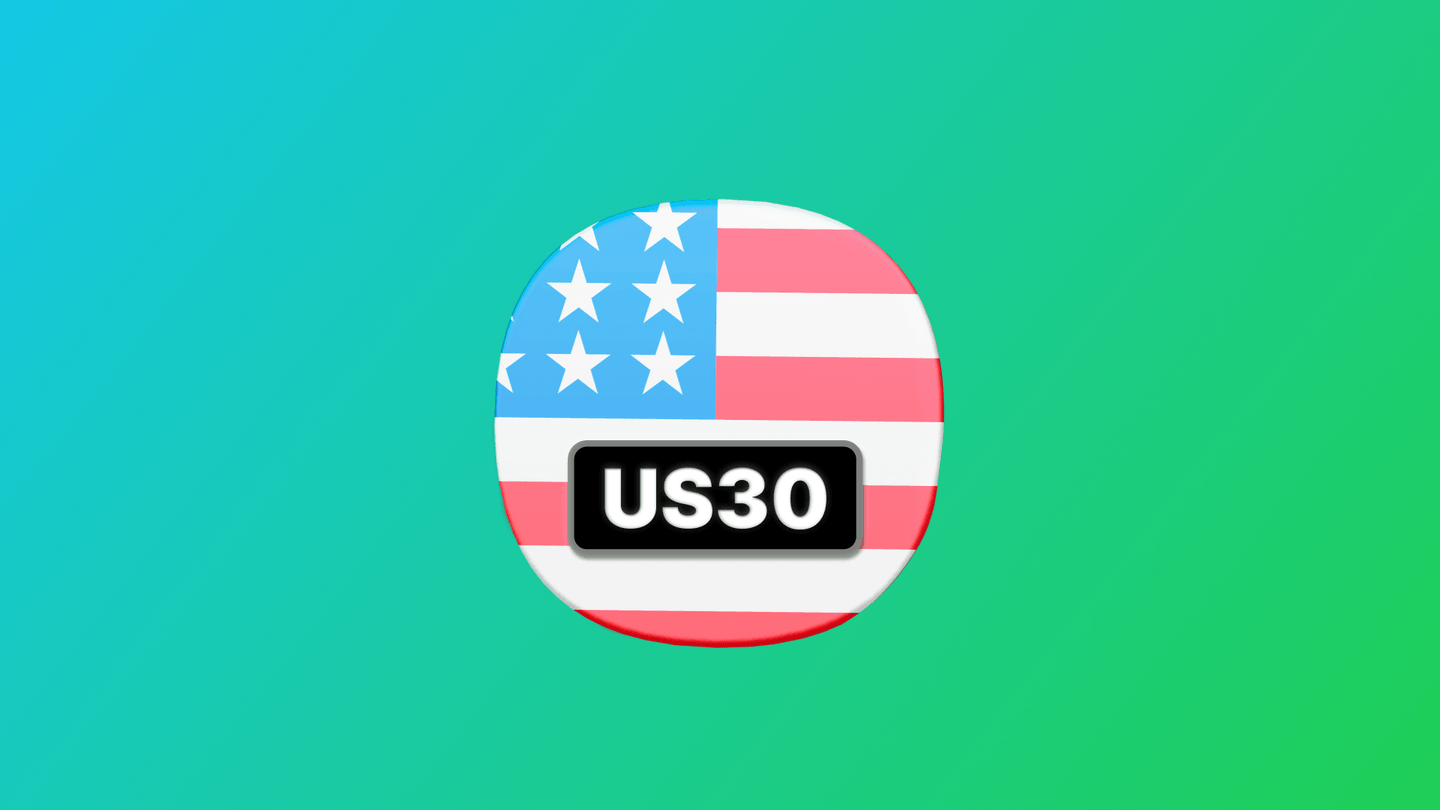What is the Dow Jones US 30 index? All you should know about DIJA
One of the oldest indexes around, the Dow Jones (DOW 30) displays how the leading US companies perform. It is commonly used by traders and market analysts. In this guide, you will find out how Dow Jones appeared, which companies constitute it, ways to calculate it and use it for trading.
What Is the Dow Jones Industrial Average?

DIJA (The Dow Jones Industrial Index) is one of the most well-established indexes that is commonly used by stock market participants. It evaluates the daily stock movement of 30 US-based publicly traded companies. Some of them are listed on the New York Stock Exchange (NYSE) and some - on the NASDAQ. These companies are giants of the American market.
This index appeared in 1896 and initially included 12 US companies that were mostly related to the industrial market and transportation. As the economy kept changing, so altered the composition of companies: DIJA started including companies from other sectors, such as health, retail and technology. The index changes when companies’ market capitalization alters, especially during financial distress.
DJIA has a few outstanding features:
- Low diversification in terms of sectors.
- The absence of companies from some economical segments in the index.
- There are no clear rules for adding new stock to the index.
- The calculation of the index is based on the maximum stock prices, and not on market capitalization.
- The composition of the index is updated extremely rarely (through the time of index existence, only 60 companies have changed in its composition).
- The dividend yield of companies in the DJIA index is higher than that of competitors (as a rule, the S&P 500 index is taken as a model competitor).
A Brief History of the DJIA (US30)
The Dow Jones index was among the first indexes of its kind. The Dow Jones Industrial Average stock indicator was created by partners and co-founders of the famous Wall Street Journal (financial news review) Charles Dow and Edward Jones in 1896. Thus, the Dow Jones stock indicator has been around for over a hundred years.
General Electric has been the most long-lasting stock in the DIJA. It was removed in 2019 after being its component for over 120 years.
Initially, the Dow Jones included 12 organizations that drove the US economy. Most of them were in the industrial sector, which was not surprising at those times. The turn of the 19th and 20th centuries is characterized by a surge in industrial development and industrialization.
In 1916, the composition of the Dow Jones index was increased to 20 issuers, and in 1928 - to 30. Since then, the number of stocks has not changed, but the stock composition has.
As of November 2021, nothing remains of the original stock list. It’s explained by the fact that some companies closed, others changed their names, others were absorbed by larger organizations, others were simply excluded from Dow Jones.
Note that the DJIA is not the only metric created by the two partners Dow and Jones. They also introduced many other indexes, such as:
- Dow Jones Transportation Stock Average: includes transport companies (DJT ticker on exchanges).
- Dow Jones Utility Stock Average includes utility producers (DJU ticker on exchanges).
- Dow Jones Composite Stock Average includes the above (DJC ticker on exchanges).
How Many Companies Are In the Dow Jones?
The Dow Jones still includes 30 issuers, all of them are the titans of the US economic system (and the world), but the industry has changed. Companies from the utilities and transport industries do not comprise it anymore.
The Dow Jones Industrial Stock Average has now become a multi-industry index. Catering, financial institutions, manufacturers of heavy equipment, electronics and digital goods, trading giants, etc. are present. IT companies are also among US market leaders. In fact, it includes the blue chips of the US stock market.
Here are the 30 companies comprising Dow Jones and their stock prices as of March 3rd, 2022:
| TICKER | NAME | PRICE (USD) |
|---|---|---|
| AXP | American Express Co | 180.39 |
| AMGN | Amgen Inc | 232.45 |
| AAPL | Apple Inc | 166.39 |
| BA | Boeing Co | 190.59 |
| CAT | Caterpillar Inc | 194.16 |
| CSCO | Cisco Systems Inc | 55.97 |
| CVX | Chevron Corp | 155.82 |
| GS | Goldman Sachs Group Inc | 333.57 |
| HD | Home Depot Inc | 325.1 |
| HON | Honeywell International Inc | 188.69 |
| IBM | International Business Machines Corp | 125.32 |
| INTC | Intel Corp | 48.08 |
| JNJ | Johnson & Johnson | 167.85 |
| KO | Coca-Cola Co | 62.74 |
| JPM | JPMorgan Chase & Co | 138.21 |
| MCD | McDonald’s Corp | 237.5 |
| MMM | 3M Co | 148.43 |
| MRK | Merck & Co Inc | 76.85 |
| MSFT | Microsoft Corp | 296.46 |
| NKE | Nike Inc | 134.85 |
| PG | Procter & Gamble Co | 154.31 |
| TRV | Travelers Companies Inc | 173.34 |
| UNH | UnitedHealth Group Inc | 484.91 |
| CRM | Salesforce.Com Inc | 206.3 |
| VZ | Verizon Communications Inc | 54.74 |
| V | Visa Inc | 209.49 |
| WBA | Walgreens Boots Alliance Inc | 46.57 |
| WMT | Walmart Inc | 139.92 |
| DIS | Walt Disney Co | 145.34 |
| DOW | Dow Inc | 59.42 |

How to join the DJIA?
When selecting each stock to comprise DIJA, the editors of the Wall Street financial news company make a consent choice taking into account several factors:
- How long has the company been existing?
- How do stock holders benefit from them?
- What is the company’s reputation in the industry?
Thus, editors are picking well-established companies with a lasting value, not just trending ones. DIJA participants have power in the industry.
How is the DJIA (US30) Index Calculated?
The approach to the calculation of this index differs from many other price-weighted indexes. For example, its main competitor, the S&P 500, is calculated based on the market capitalization of the companies that make up the index. That is, the larger and more profitable the company, the higher position it occupies in the index.
The market capitalization of companies in the Dow Jones index does not play such an important role in the calculation. Instead, the index is calculated based on the prices of stocks of companies.
Initially, the Dow Jones was calculated according to a simple formula. They summed up the prices of all stocks of all issuers and divided them by 12. Comparison with previous indicators indicated whether the value was rising or falling. The picture was spoiled by mergers, stock splits, acquisitions and other processes.
Let’s explain it with a simple example.
Let’s say our index includes three companies whose stocks are worth $10, $20, and $30. According to the old DJIA formula, our value is calculated by summing up stock prices and dividing them by the number of stocks:
(10 + 20 + 30) / 3 = 20.
So, today the value is 20. However, the third company decided to split the stocks 1:2. Now there are twice as many of them and they cost not 30, but 15 USD. In other words, a shareholder had one $30 share and now has two $15 stocks. We consider the value of the index:
(10 + 20 + 15) / 3 = 15.
Our index fell by 5 points, although the company has not fallen in price and the market stayed stable.
This is how the ‘Dow divisor’ appeared - it defines the number by which the sum of 30 stocks is divided. As of December 2021, the Dow divisor is 0.151728. You can define Dow US30 by summing up share price of all companies and dividing them by 0.151728.
Note that changes in the price of the most expensive stocks have the biggest impact on the index. For instance, a 1% change of UnitedHealth’s (highest-priced) stock would have the same impact on Dow US30 as a 8.7% change in Verizon’s stocks.
How to invest in Dow Jones?
Buy stocks from the index
By buying one stock or several stocks from the Dow Jones, you can collect a more or less reliable portfolio. Given that there are 30 companies, this is quite possible. In addition, you are free to choose only the most profitable assets from the entire composition.
The major advantage of this method is the possibility to reap dividends (if the company pays them) and independent asset management. This is what differs stocks purchase from the next approach. In addition, an individual investment account is available to investors from all over the world.
Buy Dow Jones with ETF
Exchange traded funds (ETFs) are a ready-made basket of stocks from an index. In this case, the composition of the fund’s securities completely replicates the composition of the Dow Jones. When you buy stocks in a fund, you also become the owner of the securities included in it. This means that you do not need to independently buy all the assets separately and pay a commission to the broker for each transaction. Also, this solution will be much cheaper.
The most famous Dow Jones ETF is the SPDR Dow Jones Industrial Average. As of March 2022, its stocks are trading around $350 per unit. By purchasing one such paper, you become a shareholder in 30 companies.
Keep in mind that a management company behind the fund charges a commission for its services. As a rule, it is no more than 1% of the amount you spent on the purchase of ETF securities.
Buy CFDs
Trading the Dow with CFDs means speculating on the rise or fall of the index. Essentially, it is no different from traditional trading in terms of the strategies applied. A Dow Jones CFD trader can open short or long positions, set stop losses and limits. Whether your forecast for a particular stock is positive or negative, you can trade in either direction. Besides, it is possible to margin trade on the CFD market with a leverage of up to 20:1 or even more.
Pros and Cons of the Dow Jones Industrial Average
| Pros | Cons |
|---|---|
|
|
When working with the DJIA, you need to understand its features and peculiarities well and stay attentive in order to avoid unnecessary risks. For beginners, it would be better to buy one stock or a few ones from Dow 30.


